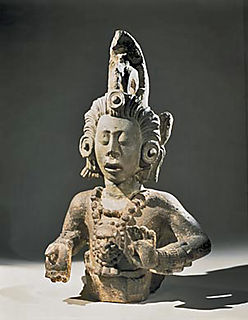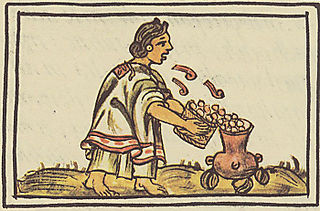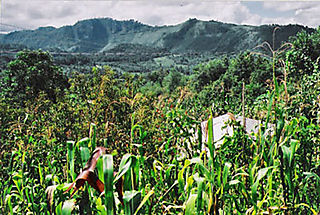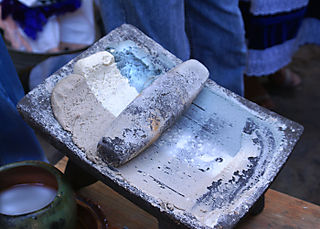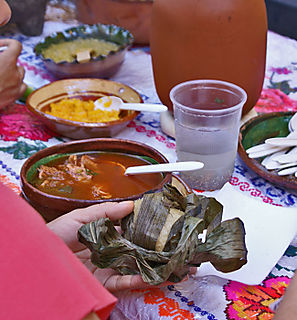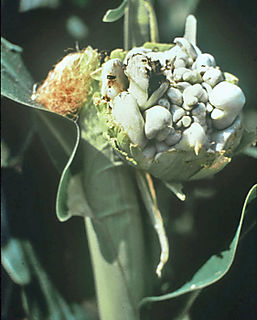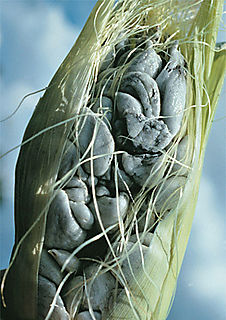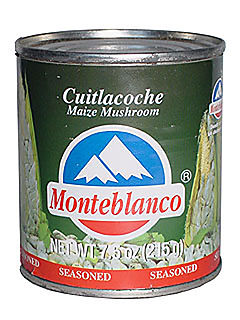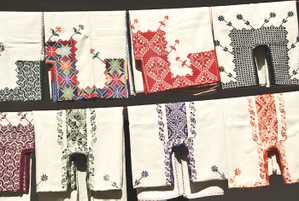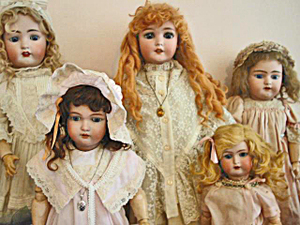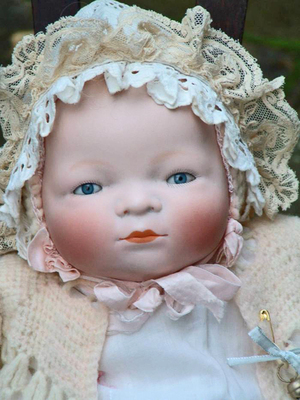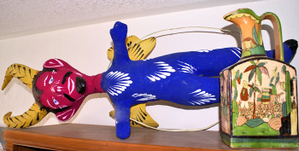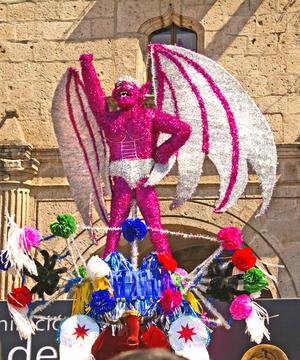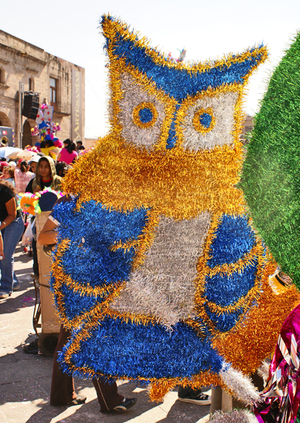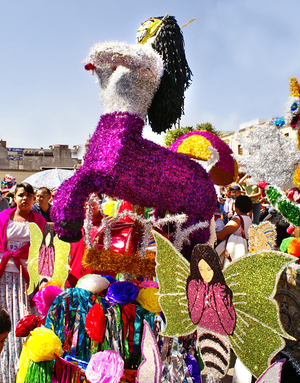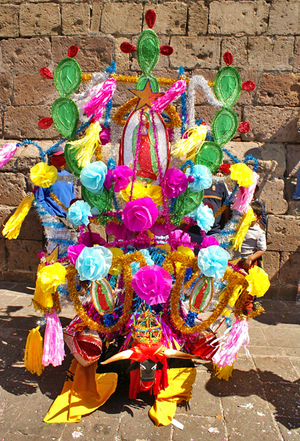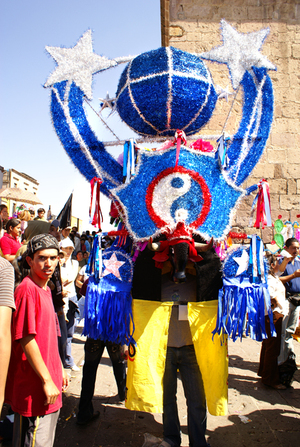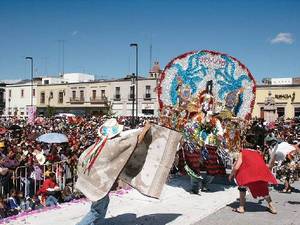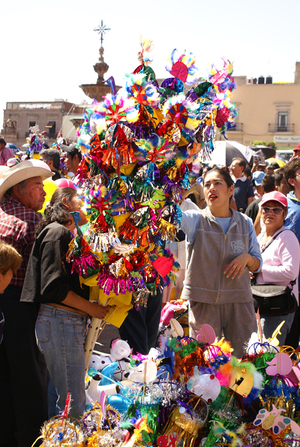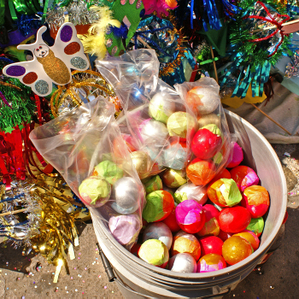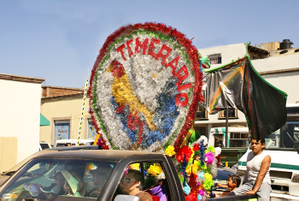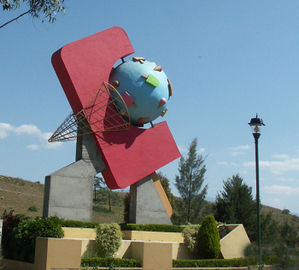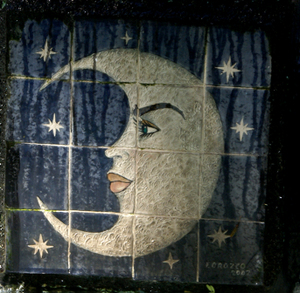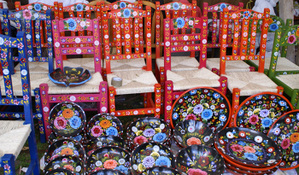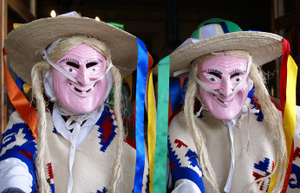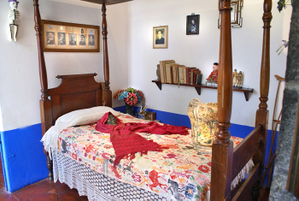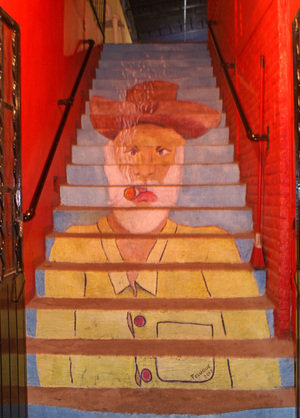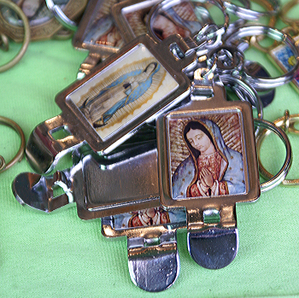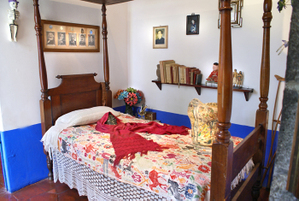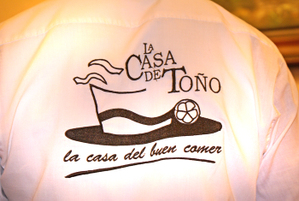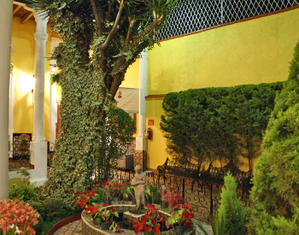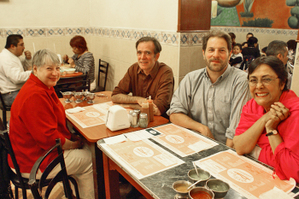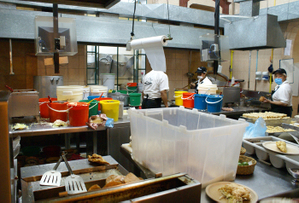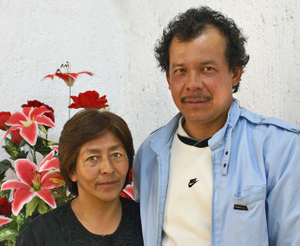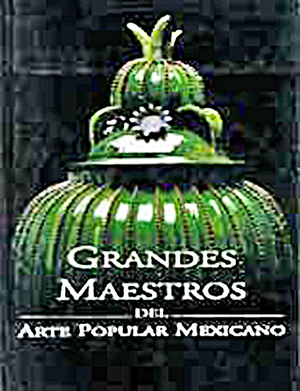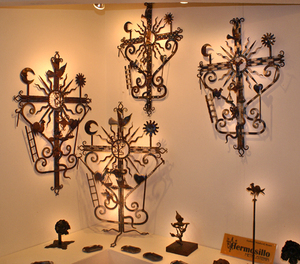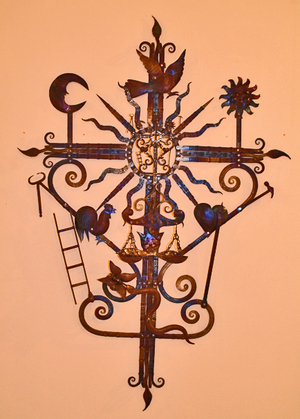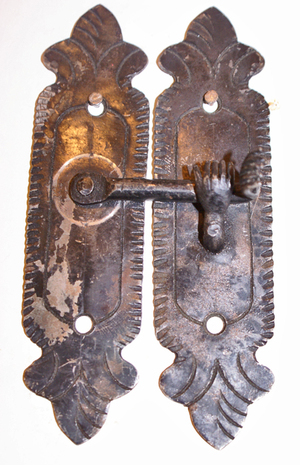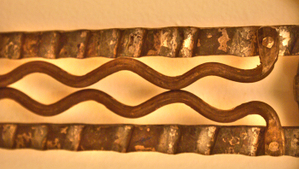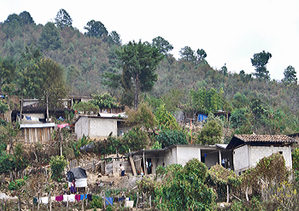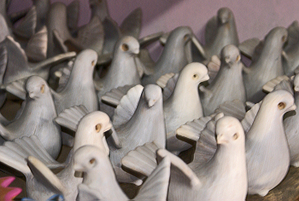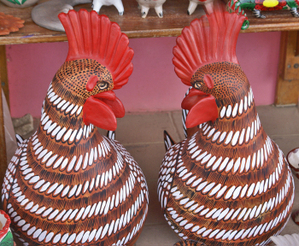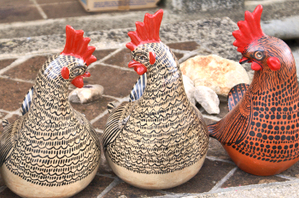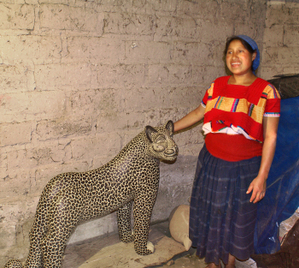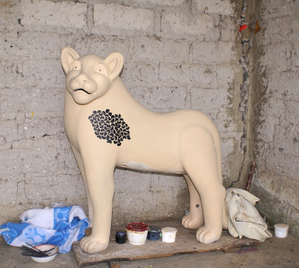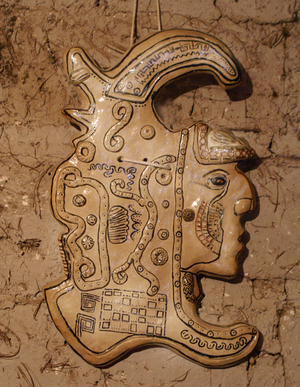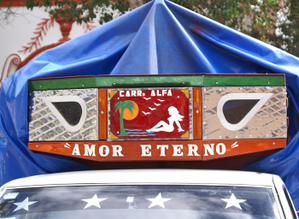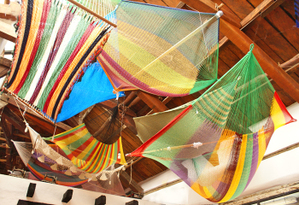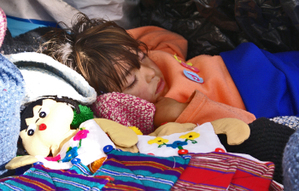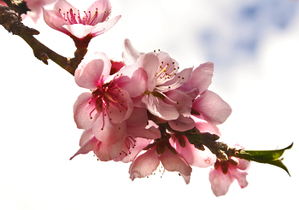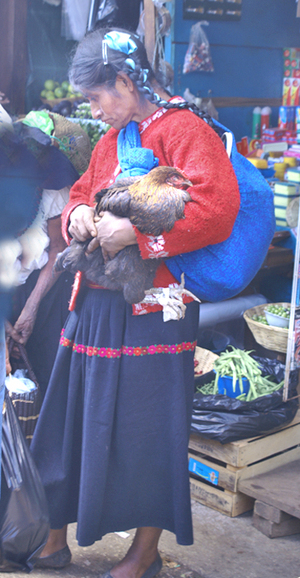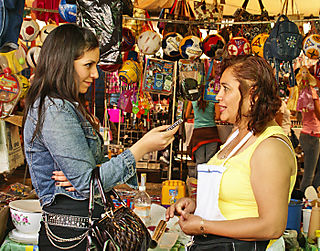
Denisse Hernández, reporter from Guadalajara's newspaper El Mural, interviews Rosario Reyes Estrada about the coctel de camarón (shrimp cocktail) that Mexico Cooks! proclaims to be the best in Mexico. Behind the two women is another tianguis (street market) booth that sells balls and toys.
Last February, while Mexico Cooks! was deep in the heart of Chiapas, an email requesting a tour arrived saying that El Mural, the prominent Guadalajara newspaper, wanted Mexico Cooks! to guide a writer and photographer on an eating tour of…Guadalajara! The initial email from the editor said Mexico Cooks! was the best blog in the blogosphere, they were dying to meet us, and that the article would be featured in an upcoming Buena Mesa, El Mural's Friday food section. Flattery will get you everywhere, so of course we said a delighted YES.
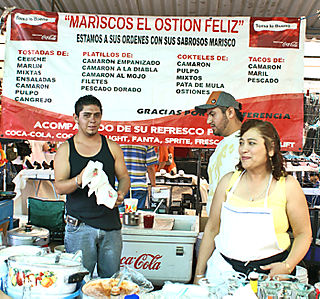
Sra. Reyes, her family, and a small staff operate El Ostión Feliz.
Mexico Cooks! met reporter Denisse Hernández and a staff photographer in Guadalajara and off we went on our eating outing. Our first stop was Guadalajara's enormous Tianguis del Sol, an outdoor market specializing in everything from replacement parts for your blender to incredible food and produce purveyors.
When I was first living in Guadalajara, a dear friend introduced me to Rosario Reyes Estrada at her booth El Ostión Feliz (the Happy Oyster). Sra. Reyes is at the Tianguis del Sol every day it's open, serving concoctions of fresh fish and seafood. Her tiny booth, where about ten hungry diners at a time sit on plastic stools at a long, oilcloth-covered table, is definitely where the desayuno (breakfast) and almuerzo (brunch) action is. We've been eating her coctel de camarón (shrimp cocktail) for years, and as far as Mexico Cooks! is concerned, it's the best in Mexico. We don't know what magic ingredient she incorporates into the coctel (she swears her only secret is the use of the absolutely freshest ingredients), but from the first bite years ago, we were instantly addicted.
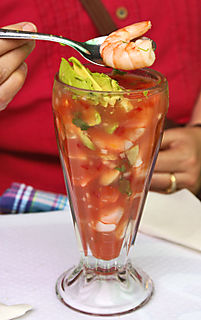
Look at the size of the shrimp in that soup spoon! Each of Doña Rosario's cocteles de camarón includes a dozen shrimp like that.
A Mexican coctel de camarón resembles a shrimp cocktail from the United States or Canada only in that both are made with shrimp. When asked for her recipe, Sra. Reyes, originally from the state of Veracruz, just smiles. This approximation of her coctel will have to satisfy you till you get to Guadalajara.
Coctel de Camarón Estilo Mexicano for Four
Ingredients for Poaching the Shrimp
48 fresh large (U25) shrimp, shell on.
1 clove garlic
1 stick celery, with leaves if possible
1 carrot, washed but not peeled
1 medium white onion, peeled
1 Roma tomato
1 chile serrano, split from tip almost to stem
A few stems of cilantro
Ingredients for composing the coctel
Caldo (broth) reserved from cooking shrimp
Sea salt to taste
1 1/2 cups tomato catsup (not a typo)
1 Tbsp minced white onion per serving
1 Tbsp minced Roma tomato per serving
1 Tbsp minced cucumber per serving
1/2 tsp minced chile serrano
Roughly chopped cilantro to taste
Ripe avocado
Mexican limes, halved and seeded
Salsa de mesa (table salsa) such as
Cholula, Valentina, Búfalo, etc.
DO NOT USE TABASCO!
What You Might Not Have On Hand
Ice cream soda glasses–optional, but authentic for serving
Procedure
In simmering water, poach the shrimp, along with the garlic, celery, carrot, onion, tomato, chile serrano, and cilantro until the shrimp are just done, firm and pink but still tender. Discard the vegetables from the poaching. Reserve and chill the caldo de camarón (poaching liquid) for later use. Be careful: a friend of mine poached his shrimp and drained it, inadvertently pouring all the liquid down the drain! Be sure to use a container under your strainer.
Shell the shrimp and chill.
At serving time, mix the catsup, the reserved, chilled caldo de camarón (shrimp broth), and sea salt to taste. Add a squeeze of fresh Mexican lime juice.
In each ice cream soda glass or other large glass, put the indicated quantities of minced onion, tomato, cucumber, chile serrano, and chopped cilantro. Add 12 shrimp to each glass. Pour the catsup/caldo de camarón mixture to cover all ingredients.
Serve with diced avocado. At the table, offer Mexican lime halves for those who prefer a limier flavor, a small dish of sea salt, a dish of minced chile serrano and another of chopped cilantro for those who prefer more, and a salsa de mesa or two for those who like more picante (HEAT!).
A coctel de camarón is traditionally served with saltine crackers and tostadas, those crunchy fried or dehydrated salty tortillas. Tostadas are usually rubbed with the cut side of a squeezed lime for added flavor. Buen provecho!
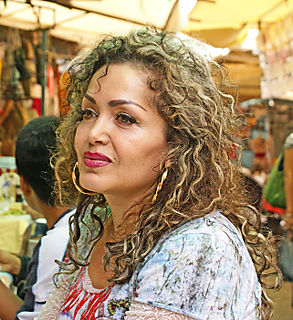
The lovely Sra. Josefina Naranjo of Guadalajara has eaten at El Ostión Feliz for years, coming every Friday to enjoy Doña Rosario's fish and seafood.
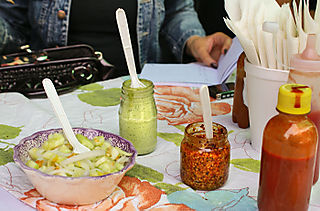
The assortment of Doña Rosario's salsas includes Valentina (in the bottle), a house-made salsa of cucumber, onion, and chile habanero (in the bowl), a green avocado/cilantro salsa, and my favorite, the little jar of salsa de ajonjolí (sesame seed) and chile de árbol. This one is so popular that Doña Rosario sells it to take home. Mexico Cooks! wouldn't be without a jar of this salsa muy picante in the refrigerator.
Next week with Mexico Cooks! and "El Mural": Taco Fish La Paz.
